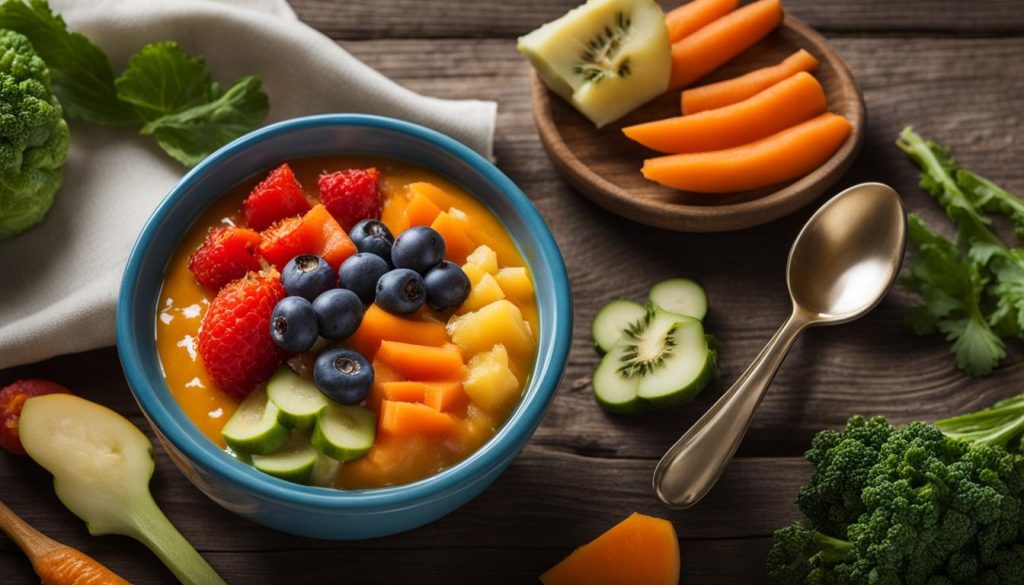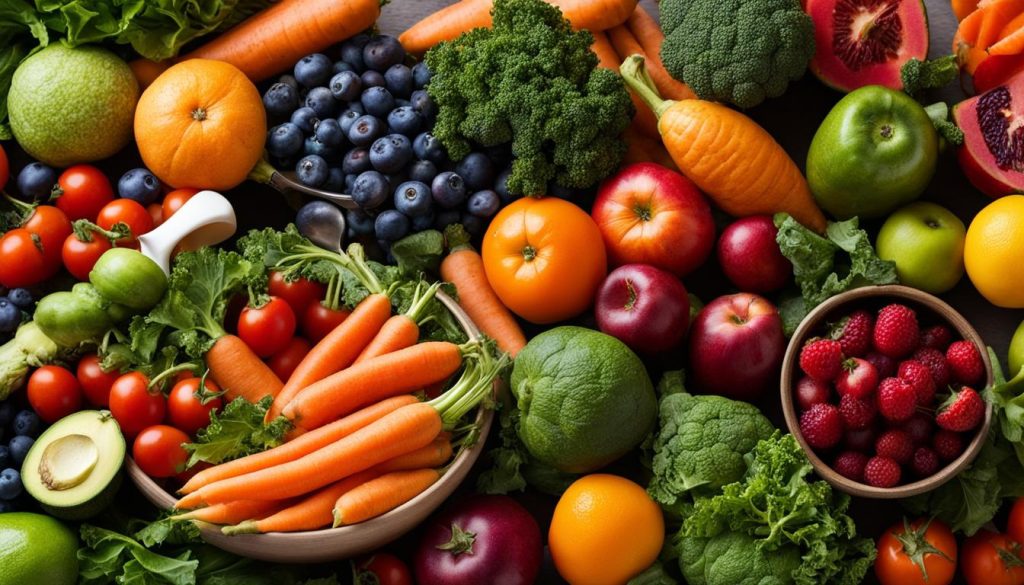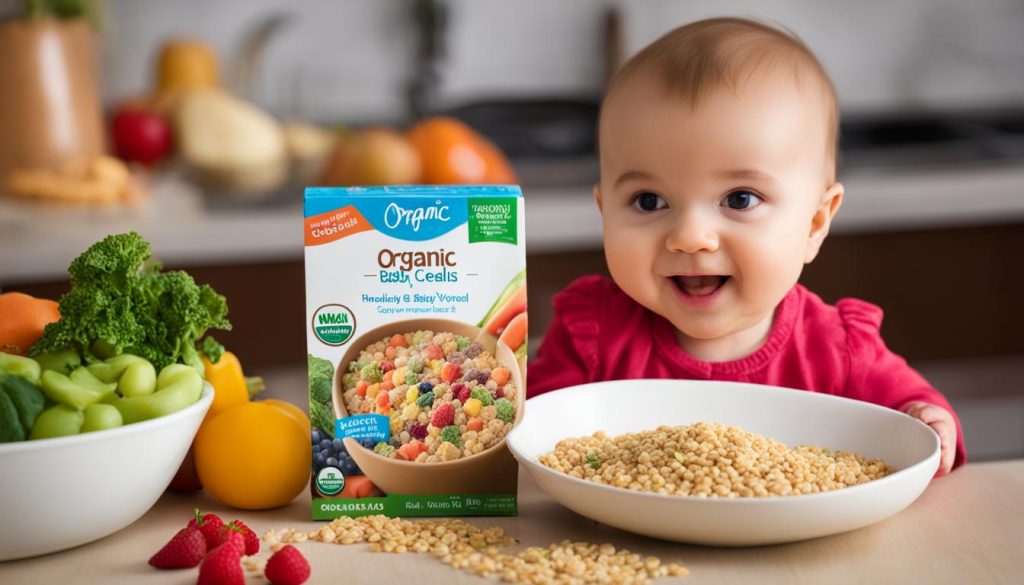Welcome to my article on organic baby food stage 3. In this section, we will explore what exactly organic baby food stage 3 is and its significance in a baby’s diet.
As babies grow, their nutritional needs evolve, and stage 3 marks an important milestone in their eating journey. This stage introduces thicker mashed foods and purees with more texture, preparing them for the transition to table foods.
Organic baby food stage 3 offers a range of benefits for your little one, including enhanced nutritional content, the absence of harmful pesticides, and valuable developmental stimulation. As parents, it’s crucial to make informed choices about the best organic baby food stage 3 options available in the market.
Understanding the Stages of Baby Food
Baby food is often categorized into different stages to indicate the age appropriateness and texture of the food. While the American Academy of Pediatrics does not specifically discuss stages, most popular brands divide baby food into four stages. These stages help parents determine when and how to introduce different types of food to their baby’s diet.
Stage 1: This is the initial stage of baby food introduction, typically when babies are around 4 to 6 months old. Stage 1 baby foods are single-ingredient purees, such as pureed fruits and vegetables. These smooth and runny purees help babies get accustomed to new flavors and textures.
Stage 2: At around 6 to 8 months old, babies move on to stage 2 baby foods. These foods are strained combination foods that offer a wider variety of flavors and textures. Stage 2 baby foods often consist of mixtures of fruits, vegetables, and grains.
Stage 3: Stage 3 baby foods are typically introduced when babies are 9 to 12 months old and have developed the ability to chew. These foods have more texture and small chunks, allowing babies to practice their chewing skills. Stage 3 baby foods often include a combination of fruits, vegetables, grains, and proteins.
Stage 4: Some brands also offer a stage 4 baby food, which is meant for babies who are around 12 months old and transitioning to table foods. Stage 4 baby foods have chunkier textures and may include a wider variety of ingredients to expose babies to different flavors.
It’s important to note that the age ranges mentioned for each stage are approximate, and babies may progress through the stages at their own pace. Parents should always consult with their pediatrician on when to introduce different stages of baby food and ensure the food is appropriate for their baby’s individual developmental and nutritional needs.
Table: Comparison of Baby Food Stages
| Stage | Age Range | Texture | Example Foods |
|---|---|---|---|
| Stage 1 | 4 to 6 months | Smooth and runny purees | Single-ingredient purees (e.g., pureed carrots, applesauce) |
| Stage 2 | 6 to 8 months | Strained combination foods | Mixed purees (e.g., apple and banana blend, sweet potato and quinoa) |
| Stage 3 | 9 to 12 months | Textured with small chunks | Mashed foods with small soft pieces (e.g., mashed banana with small chunks, mashed peas with rice) |
| Stage 4 | 12 months and older | Chunkier textures | Thicker purees with more variety (e.g., pasta with vegetables and meat) |
Benefits of Organic Baby Food Stage 3
When it comes to feeding your baby, choosing organic baby food stage 3 can offer numerous benefits for their overall health and development. Organic baby foods are made from ingredients that are grown without the use of synthetic pesticides or chemical fertilizers, ensuring a cleaner and healthier option for your little one.
One of the significant advantages of organic baby food stage 3 is its nutritional content. These foods are packed with essential vitamins, minerals, and antioxidants that support your baby’s growth and development. They provide a well-balanced diet and promote a healthy immune system, helping your little one thrive.
Furthermore, organic baby food stage 3 encourages the development of fine motor skills and self-feeding. The transition to thicker mashed foods and purees with more texture helps babies improve their chewing and swallowing abilities. This stage prepares them for transitioning to table foods and encourages them to explore different tastes and textures.
By choosing organic baby food stage 3, you also ensure that your baby is not exposed to genetically modified organisms (GMOs) or artificial additives. Organic foods adhere to strict quality standards and undergo rigorous testing to ensure the absence of contaminants. This gives parents peace of mind knowing that they are providing their baby with the best possible start in terms of nutrition and health.
Table: Nutritional Comparison – Organic vs. Conventional Baby Food Stage 3
| Nutrient | Organic Baby Food Stage 3 | Conventional Baby Food Stage 3 |
|---|---|---|
| Vitamin C | Higher levels | Lower levels |
| Iron | Fortified with higher levels | Fortified with lower levels |
| Antioxidants | Higher levels | Lower levels |
| Pesticides | No synthetic pesticides | May contain synthetic pesticides |
| Artificial Additives | None | May contain |
Table: Nutritional comparison between organic and conventional baby food stage 3.
Differences Between Organic and Conventional Baby Foods
When it comes to choosing baby food for your little one, understanding the differences between organic and conventional options is essential. Organic baby food is made from organically grown ingredients, which means they are free from synthetic pesticides, genetically modified organisms (GMOs), and artificial additives. On the other hand, conventional baby foods may contain ingredients that have been treated with pesticides and may include artificial additives.
One of the key benefits of organic baby food is the absence of synthetic pesticides. Pesticides are chemicals used to kill insects and pests on crops, but they can leave behind harmful residues. Organic farming practices eliminate the use of these chemicals, reducing the risk of exposure to pesticides in your baby’s food. Additionally, organic baby food is free from GMOs, which are organisms that have been genetically modified through genetic engineering.
Another important difference is the rigorous testing and quality standards that organic baby foods adhere to. These products undergo strict regulations to ensure the absence of contaminants and to maintain their organic certification. On the other hand, conventional baby foods may not have the same level of scrutiny, which could lead to potential safety concerns.
The Benefits of Choosing Organic Baby Food
- Free from synthetic pesticides and GMOs
- No artificial additives
- Adheres to strict quality standards
- Rigorous testing for contaminants
Choosing organic baby food provides peace of mind for parents who want to give their little ones the best start in life. By opting for organic options, you can ensure that your baby is receiving food that is free from potentially harmful chemicals and additives.
| Organic Baby Food | Conventional Baby Food |
|---|---|
| Organically grown ingredients | Potential pesticide residues |
| No GMOs | Potential for genetically modified ingredients |
| Adheres to strict quality standards | Potential safety concerns |
Nutritional Content of Organic Baby Food Stage 3
When it comes to the nutritional content of organic baby food stage 3, parents can rest assured knowing that their little ones are getting a range of essential nutrients for their growth and development. Stage 3 organic baby foods are carefully formulated to provide a balanced diet for babies aged 9 to 12 months.
Organic baby food stage 3 typically includes a variety of fruits, vegetables, grains, and proteins. These foods are rich in vitamins, minerals, and antioxidants that support overall health and contribute to the baby’s cognitive and physical development. They also help strengthen the baby’s immune system, which is crucial during this stage of rapid growth.
One important nutrient that is often fortified in organic baby food stage 3 is iron. Iron is essential for the baby’s brain development and helps prevent iron deficiency anemia. By introducing organic stage 3 baby foods into their diet, parents can ensure that their little ones are receiving the necessary iron intake for proper cognitive function.
Nutritional Content Comparison
| Product | Calories | Protein (g) | Carbohydrates (g) | Fat (g) | Iron (mg) |
|---|---|---|---|---|---|
| Organic Sweet Potato Puree | 80 | 1 | 18 | 0 | 0.3 |
| Organic Apple & Pear Blend | 70 | 0 | 17 | 0 | 0.2 |
| Organic Quinoa & Spinach Medley | 90 | 2 | 16 | 2 | 0.4 |
| Organic Chicken & Vegetable Mash | 100 | 3 | 15 | 3 | 0.6 |
Table: Nutritional content comparison of selected organic baby food stage 3 products. The calorie, protein, carbohydrate, fat, and iron content may vary slightly between different brands and flavors.
Tips for Parents When Choosing Organic Baby Food Stage 3
When it comes to choosing organic baby food stage 3, there are a few key tips that can help parents make the best decision for their little one. First and foremost, it’s important to read the labels carefully. Look for organic certifications from reputable organizations to ensure that the product meets strict organic standards.
Next, take a close look at the ingredients list. Avoid products that contain added sugars or artificial additives, as these can be harmful to your baby’s health. Opt for natural and wholesome ingredients instead.
Additionally, it’s beneficial to choose a variety of flavors and textures when introducing stage 3 baby foods. This will help expose your baby to different tastes and encourage their palate development. Offering a range of fruits, vegetables, grains, and proteins can provide a well-rounded and nutritious diet.
Finally, consulting with a pediatrician is always a good idea. They can provide personalized recommendations and guidance based on your baby’s specific needs and preferences. Your pediatrician will be able to give you valuable advice on how to safely incorporate stage 3 baby foods into your child’s diet.
FAQ
What is organic baby food stage 3?
Organic baby food stage 3 refers to the third stage of solid food introduction for babies, typically around 9 to 12 months old. This stage includes thicker mashed foods and purees with more texture, transitioning towards table foods.
How are baby foods categorized into stages?
Baby food is often categorized into stages to indicate the age appropriateness and texture of the food. While the American Academy of Pediatrics does not specifically discuss stages, most popular brands divide baby food into four stages. Stage 1 includes single-ingredient purees, stage 2 includes strained combination foods, and stage 3 includes foods with more texture and small chunks.
What are the benefits of organic baby food stage 3?
Organic baby food stage 3 offers several benefits for young children’s health and development. It is made from ingredients grown without synthetic pesticides or chemical fertilizers, does not contain GMOs or artificial additives, provides essential nutrients, promotes a healthy immune system, and encourages the development of fine motor skills and self-feeding.
What is the difference between organic and conventional baby foods?
The main difference between organic and conventional baby foods lies in their production methods and ingredients. Organic baby foods are made from organically grown ingredients that are free from synthetic pesticides, GMOs, and artificial additives. Conventional baby foods may contain ingredients treated with pesticides and may include artificial additives. Organic baby foods adhere to strict quality standards and undergo rigorous testing to ensure the absence of contaminants.
What is the nutritional content of organic baby food stage 3?
Organic baby food stage 3 is designed to provide essential nutrients for growing babies. It typically includes a variety of fruits, vegetables, grains, and proteins, which are rich in vitamins, minerals, and antioxidants. Organic baby food stage 3 is often fortified with iron, important for cognitive development and preventing iron deficiency anemia. The nutritional content may vary, so it’s important to read the labels and choose options that meet your baby’s dietary needs.
What tips can parents consider when choosing organic baby food stage 3?
When choosing organic baby food stage 3, parents can read labels for organic certifications, check the ingredients list for added sugars or artificial additives, choose a variety of flavors and textures, and consult with a pediatrician for personalized recommendations and guidance on introducing stage 3 baby foods to their child’s diet.





